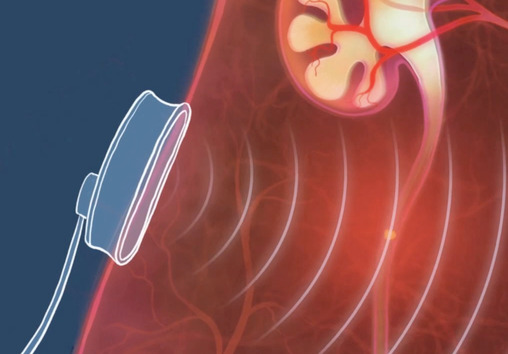Research
Cavitation as a gateway to better therapies
Cavitating bubbles can ablate cancer cells, fragment tissues, and deliver drugs, among other functions. I create high-fidelity computational methods to simulate these dynamics. Examples are:
- Euler–Euler and Euler–Lagrange sub-grid bubble cloud models
- Accelerated models using a statistical paradigm and neural networks
- Implementation in my open-source solver MFC
These enable realistic simulation of the bubble populations that nucleate during treatment. This has impacted application-specific treatments, including:
- Improved burst-wave lithotripsy administration in human trials
- Understanding of bubble-collapse-rebound dynamics
- Cavitation-induced erosion potential for rough materials
Learning from animals: Humpback whales
Perspective on bubble utilization can come from a surprising source: animals. Humpback whales hunt using bubbly regions (called bubble nets) and loud vocalizations. Specifically, they
- Release air from their blowholes while swimming, spiraling downwards
- Surround their prey with a wall of bubbles
- Vocalize from the exterior, trapping small fish in loud sound (~190dB!)
- Swim up and through the interior, lunge feeding on the fish
While fascinating, the acoustic mechanisms enabling this behavior are not understood. My ensemble-averaged bubbly flow model simulates the relevant acoustic phenomena, advancing our interpretation of this behavior. Similar outcomes are desirable for sensitive, implanted biomedical devices.
Therapy design via adjoint-based optimization
Designing medical therapies requires efficient optimization algorithms. Current methods fail to account for the material interfaces or shock waves that occur during treatments like lithotripsy and histotripsy. I created an adjoint-based technique for navigating these complications and computes the gradient-based information required for such optimization and sensitivity analysis. Coupling with PlasCom2 provides a full optimization framework for medical therapies and devices.

An in silico microfluidics and microcirculation
I create simulation methods for the cellular flows that occur in vivo and in biomicrofluidic devices. These tools are composed of physical models for the cells and particles and numerical methods to solve for their motion. These are implemented in RBC3D, my state-of-the-art flow solver that resolves all particle-scale interactions. Coupling RBC3D with stability and optimization tools I discovered:
- The buckling mechanism mediating the flow of sickle cells.
- The chaotic behavior of microcirculatory flows, and so computational methods cannot predict cell location (or motion) at long times.
- A data-driven low-order model for the flow statistics.
Targeted microcapsules for drug delivery
Capsules can deliver drug payloads via the microcirculation and pulmonary system. The capsules dynamics are an important design condition in this application, which are particularly sensitive to the capsule membrane itself. I crafted kinematic stability analyses of this coupled dynamical system, including:
- The first Floquet analysis of such a system, which classifies the stability without the ambiguity of empirical perturbations or experiments
- Non-modal extensions of the stability analysis, enabling the prediction of rheometric flows and characterization of the capsule’s mechanical properties